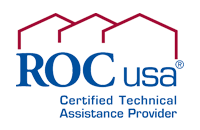
Redefining success: Let the needs of local business drive impact investing
By Community Loan Fund staff
Impact investors dedicated to strengthening local economies must change how they support local businesses—starting with redefining the problem the investors are trying to solve.
It’s easy for impact investors to define success based on internal goals, such as filling the gaps between mainstream financiers, or creating a progressive “100% mission” portfolio. Instead, investors should define success externally: to what degree they can help locally owned businesses prosper.
To move to a post-COVID economy that addresses racial inequities, impact investors must recognize that their capital, alone, won’t get us there. Capital is just one instrument within the community orchestra—crucial, but not sufficient. In addition, small businesses need an on-the-ground conductor, one skilled at identifying and blending all the other necessary instruments, like business assessments, cost-sharing grants to pay for technical advice, and the right type of capital at the right time.
 Thanh Ho, co-owner of Saigon Asian Market in Manchester, NH. Thanh Ho, co-owner of Saigon Asian Market in Manchester, NH. |
Community Development Finance Institutions (CDFIs) can be that conductor. We have a proven record of combining capital and business-building know-how within sectors that neighborhoods demand, like child care, local food, and retail.
Locally owned businesses, with sales between $500,000 and $5 million, are the backbone of local economies. Each is unique and needs relationship-based capacity building. Few have advisory boards. Their owners know their products or services well, but often have limited business-building experience. Their time and energy are absorbed by meeting immediate customer needs, leaving little for important tasks like improving their operations to enable the business to grow.
Five things small businesses need
Based on the New Hampshire Community Loan Fund's experience as a lender, small businesses need five elements to thrive:
Sounding Boards – A trusted advisory board and/or CEO peer group is needed to help the owner think beyond the day-to-day and help vet ideas, so the business plan remains strategic and adaptive to market changes.
Business-Building Skills – A better service or product doesn’t guarantee success. It must be delivered profitably to the market. This requires good financial management, marketing, and knowledge of human resources. These business-building skills ultimately determine whether the business remains viable.
Grants for Technical Assistance – Once a core business issue is identified, CEOs and owners often need to tap into the expertise of professionals who are knowledgeable about their industry and well-matched to the stage/size of their business and the management’s learning style. Without an initial grant, many business owners can’t afford this customized support.
Boots on the Ground – Business owners need a trusted “guide” who can broker relationships with local resources, like the right accountant, lawyer, and insurance agent.
Capital – A business needs to have access to the right amount of capital, with the right deal structure (debt, sub debt, royalty and equity), at the right time. Easy to say, but hard to do. Social impact investors that offer one type of capital are like a carpenter who arrives holding just a hammer. Their business solutions tend to involve nails. The business owner who doesn’t understand the benefits and tradeoffs of each type of capital probably won’t ask about the rest of the toolbox.
How can impact investors help meet these five needs? First, and most importantly, they must re-define their goal: not in terms of the degree of mission alignment within their portfolio, but rather in the degree of success of community-based businesses. Second, they must acknowledge that the type of assistance that they offer—typically some form of debt financing—while essential, is insufficient to achieve that success.
A better approach is for impact investors to begin by selecting a CDFI partner who knows the geographic area and has a record of delivering results. Together they can assess the various symphonic needs and establish a strategy for attracting all the right instruments.
Grants needed to deploy investments
Typically, to invest capital with impact, CDFIs require matching grants that are between 10 and 30% of the investment to cover its full deployment (which may include technical assistance grants and funding reserves). The lack of such funding constrains the assistance the CDFI could otherwise provide, and in doing so, often shifts the cost to government and other top-down solutions. This shift mutes the voice of local citizens and local businesses by relying on more standardized “one-size-fits-all” solutions like Payment Protection Plan (PPP) loans. At best, these narrow solutions only temporarily plug holes.
The good news is that some leaders in the philanthropy and impact investing field are beginning to redefine success. Leaders as influential as those at the Heron Foundation plan to engage directly the communities they are trying to serve to let them allocate the funding.
This is a step in the right direction, but step with caution. Businesses’ needs are complex, and a full symphonic response is needed. How to ensure that the capital will come with the expertise to help those businesses to succeed?
CDFIs can play an important role in this strategy. They can be the conductor on the ground that offers customized assessment. They can also match business owners with technical assistance providers and the right mix of capital.
When investors, CDFIs, and community groups work in tandem, each doing what it does best, those businesses that have been overlooked by mainstream capital—including minority- and women-owned companies and those in low-income neighborhoods—will be better able to compete and thrive.
And when our goal is redefined to put local businesses first, impact investors move closer to building the types of diverse local economies we need.
Learn about how and why to invest in the Community Loan Fund.















